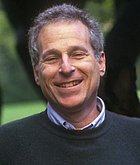EPS Liquid Matter Prize 2011
To be awarded to Professor David Chandler
The Liquid Matter Prize 2011 of the European Physical Society is awarded for outstanding contributions to the science of liquid matter. David Chandler, University of California at Berkeley, will be the next recipient on the occasion of the 8th EPS Liquid Matter Conference to be held September 6-10, 2011, in Wien, Austria. Previous prize winners were J.-P. Hansen (2005) and H.N.W. Lekkerkerker and P.N. Pusey (2008). Chandler, recognized as one of the leading liquid matter theorists world-wide, will receive the Prize "for seminal works that have enhanced our understanding of the molecular nature of liquid matter, including highly original and influential theories of microscopic structure, chemical equilibrium and kinetics, quantum processes in fluids, hydrophobicity and vitrification".
David Chandler, Professor at the University of California, Berkeley, was born in New York in 1944. After receiving a S.B. degree in Chemistry from MIT and a Ph.D. in Chemical Physics from Harvard, Chandler began his academic career in 1970 at the University of Illinois, Urbana-Champaign, where he rose through the ranks to become a full professor in 1977. Following a two-year stay at the University of Pennsylvania he joined the faculty of UC Berkeley. Chandler's general research area is statistical mechanics, which he has applied masterfully to gain fundamental and wide-ranging insights into the microscopic structure and dynamics of liquid matter.
Early in his career Chandler developed, with Hans Andersen and John Weeks, a quantitative description of the structure and thermodynamics of simple liquids based on molecular packing and a perturbative treatment of attractive interactions. This work, known as the WCA theory, is generally regarded as a basic equilibrium theory of the liquid state. Chandler, with his co-workers, introduced the reference interaction site model (RISM) to provide the first successful predictions of the structures of polyatomic liquids. This work led to the subsequent development by his student Kenneth Schweizer of a molecular theory of polymeric melts.
In the mid 1970's, Chandler introduced statistical mechanical techniques for analyzing chemical equilibrium and chemical dynamics in condensed matter. Collaborating with Bruce Berne, he carried out the first computer simulations of such processes. Thereafter, with Peter Wolynes, Chandler developed quantum mechanical (path integral) versions of these methods, which he applied fruitfully to understanding electrons in liquids, electron transfer in proteins, and nuclear vibrations and tunneling in liquid phase chemical dynamics.
In the late 1970’s Chandler and his student Lawrence Pratt developed a molecular theory of the hydrophobic effect, i.e. the nature of the organization of water close to an oily species, believed to play a central role in self-assembly and life processes. Returning to the problem in 1999, with Ka Lum and John Weeks, Chandler extended this theory to larger lengths scales and showed how a low-density water region can develop adjacent to extended oily surfaces, providing a potential driving force for hydrophobic assembly.
In the period 1997-2001 Chandler, with Peter Bolhuis, Christoph Dellago and Phillip Geissler, devised the transition path sampling method to carry out computer simulations of rare events in complex systems. In this approach, based on a statistical mechanics of trajectories, mechanisms are analyzed in terms of transition path distributions and transition state ensembles. This method, now in the text books, has been applied in many different contexts, including studies of solvated bio-molecules, nucleation processes, and aging of meta-stable systems. The ideas underlying transition path sampling extend far beyond chemical dynamics. An important illustration is the novel approach to glassy dynamics that Chandler and Juan Garrahan have developed based upon the geometry of trajectory space. Employing these sampling methods, they have demonstrated the existence of a first-order dynamical transition in trajectory space to a structurally disordered, non-ergodic state. Their approach promises to provide a unified picture of glassy phenomena.
In recognition of his research accomplishments, Chandler has received numerous awards and election to the US National Academy of Sciences. He is also the author of the textbook “Introduction to Modern Statistical Mechanics”, equally popular among students and practitioners in the field.
David Chandler’s webpage: http://gold.cchem.berkeley.edu/
EPS Liquid Matter Prize
2011
David Chandler
2008
H.N.W. Lekkerkerker and
P.N. Pusey
2005
J.-P. Hansen

